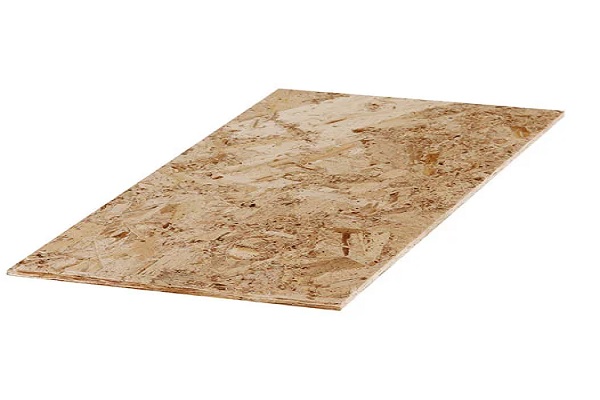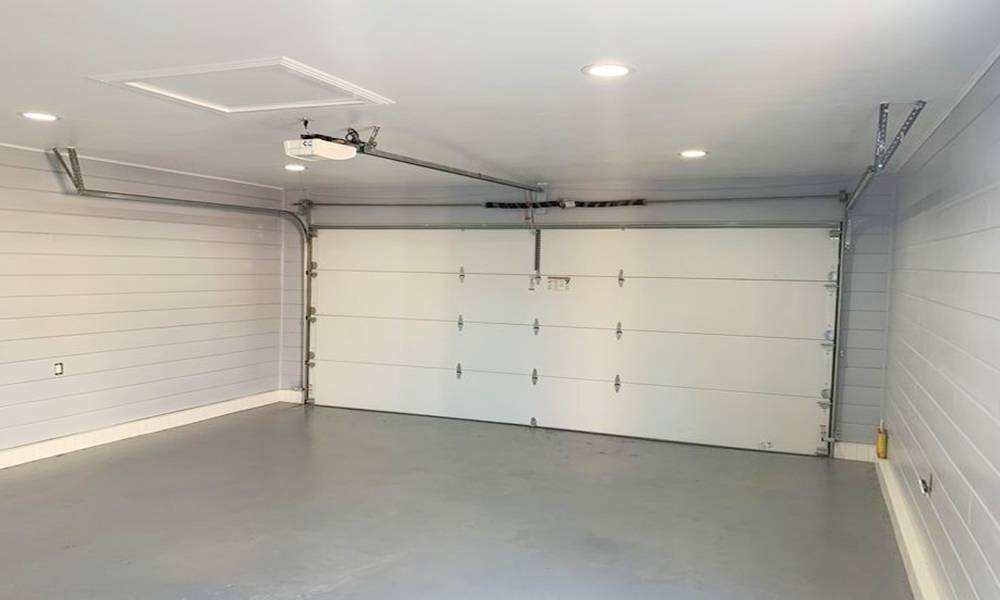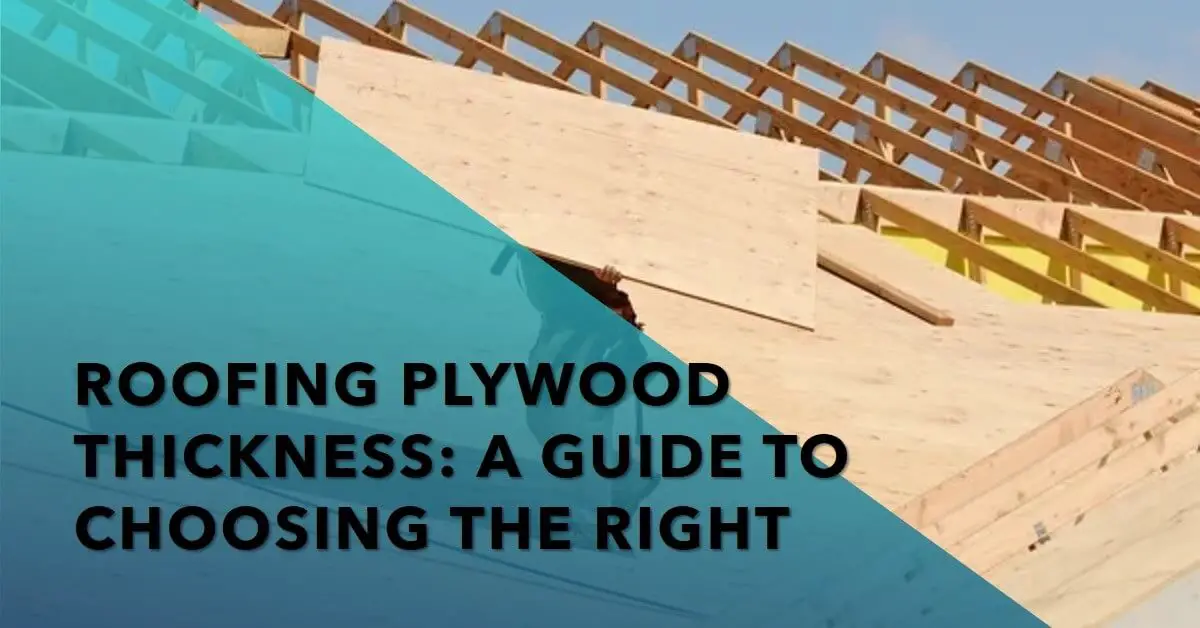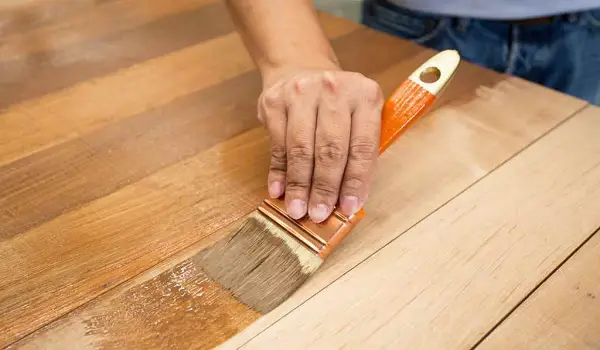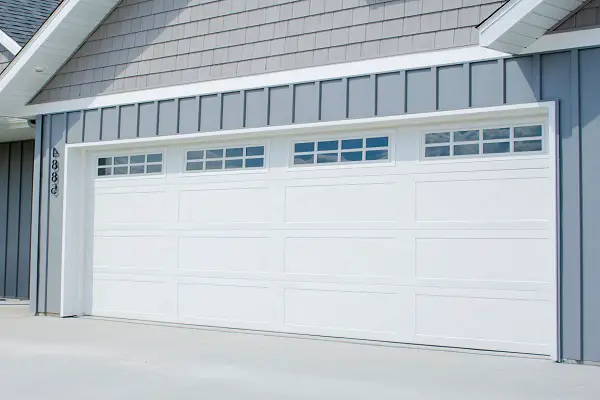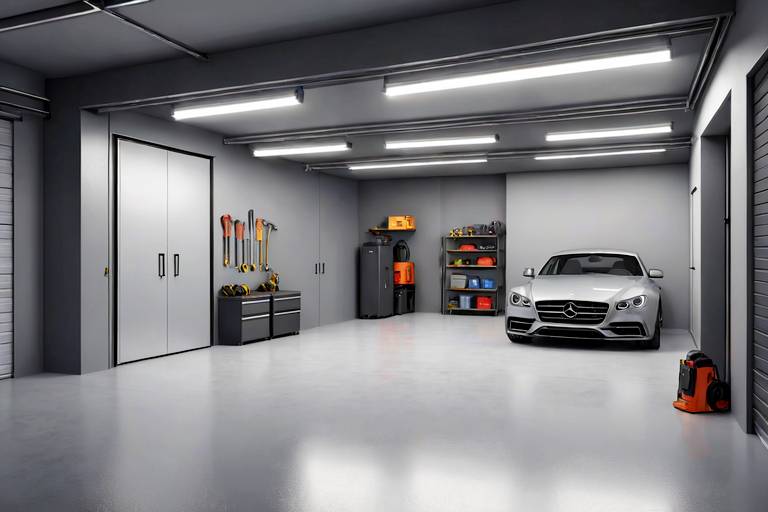Paneling for Garage Walls: Changing Style and Functionality
If you’re looking to enhance the appearance and functionality of your garage, investing in garage wall paneling is a smart […]
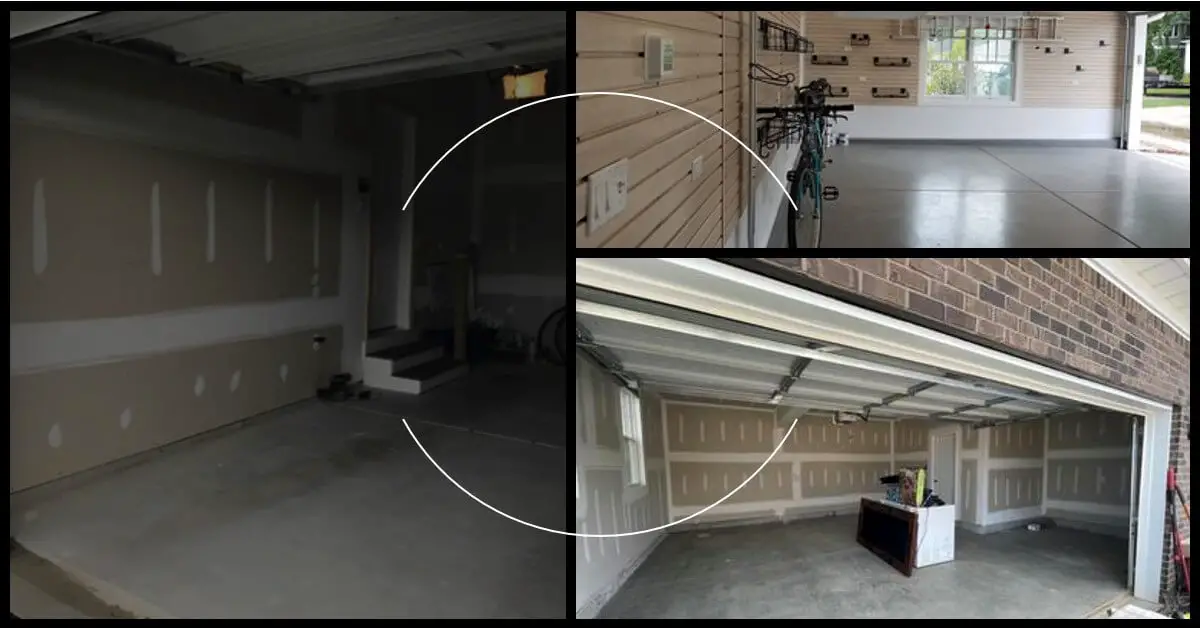
If you’re looking to enhance the appearance and functionality of your garage, investing in garage wall paneling is a smart choice.
Paneling offers numerous benefits, including protection, durability, and aesthetic appeal.
In this article, we will explore the different types of garage wall paneling available, their advantages, installation process, maintenance tips, and creative ideas to revamp your garage.
Whether you’re aiming for a waterproof solution, decorative accents, or a specific style, we’ll guide you through the process of choosing the right paneling for your garage.
The Importance of Garage Wall Paneling

Garage wall paneling serves as an excellent way to upgrade your garage’s overall look and feel.
Many garages have unfinished or bare walls, leaving them susceptible to damage from moisture, impact, and general wear and tear.
By installing wall paneling, you not only protect the underlying structure but also create a more organized and appealing space.
Types of Garage Wall Paneling
Waterproof Wall Panels for Garage
Waterproof wall panels are a popular choice for garage spaces due to their resistance to moisture.
These panels are typically made from durable materials such as PVC or fiberglass, ensuring they can withstand exposure to water, humidity, and temperature fluctuations.
With waterproof wall panels, you can eliminate concerns about mold, mildew, and water damage in your garage.
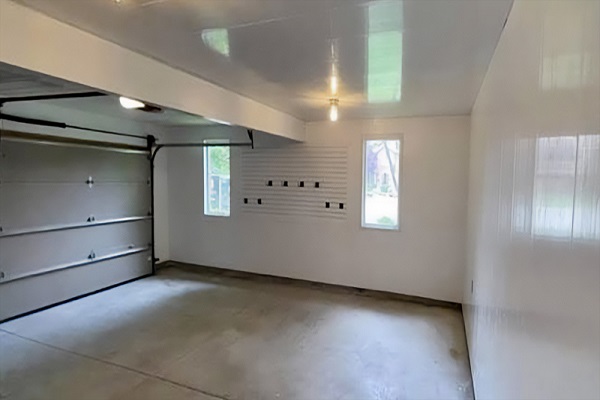
Decorative Paneling for Garage Walls
If you want to elevate the visual appeal of your garage, decorative paneling is an ideal option. This type of paneling comes in a variety of styles, textures, and colors, allowing you to personalize your space.
Decorative paneling can transform a dull garage into an inviting and stylish area that reflects your unique taste and personality.
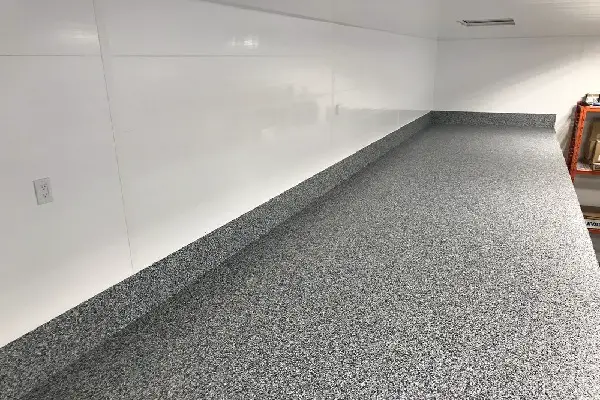
Wood Paneling for Garage Walls
For a warm and classic look, wood paneling offers a timeless aesthetic. Wood paneling is available in different wood species, including pine, cedar, and oak, each with its distinctive grain pattern and character.
Wood paneling not only adds a touch of elegance to your garage but also provides insulation and acoustic benefits.
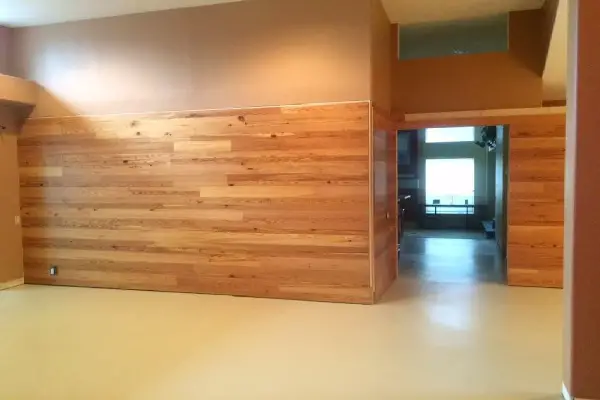
Vinyl Paneling for Garage Walls
Vinyl paneling is a versatile and cost-effective choice for garage wall coverings. It is known for its durability, easy maintenance, and resistance to moisture and impact.
Vinyl panels are available in various finishes and designs, allowing you to create a modern or traditional look for your garage.
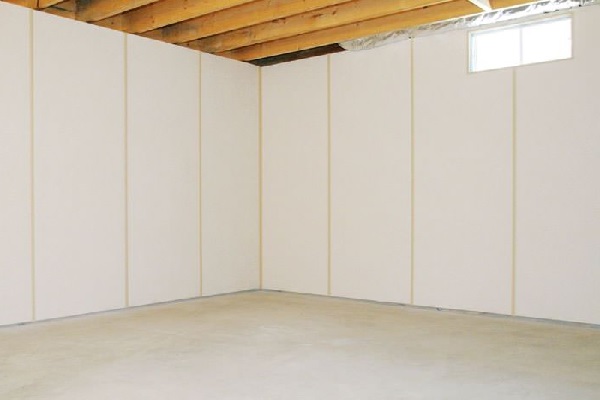
Metal Paneling for Garage Walls
If you’re aiming for an industrial or contemporary aesthetic, metal paneling is an excellent option. Metal panels offer exceptional durability, fire resistance, and low maintenance requirements.
They can withstand heavy use, making them suitable for garages used for commercial purposes or as workshops.
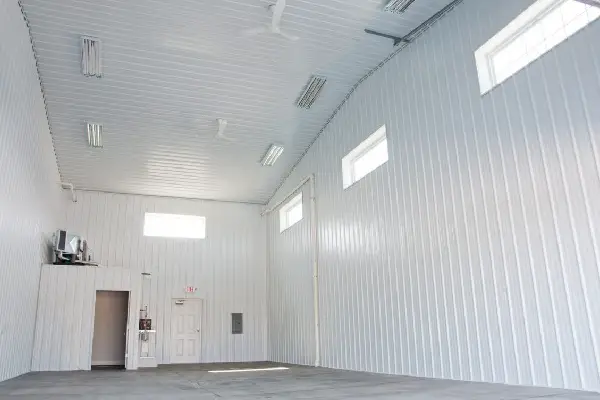
Advantages of Garage Wall Paneling
Protection and Durability
Garage wall paneling acts as a protective layer, shielding your walls from scratches, dents, and other types of damage. It provides an extra level of durability, ensuring that your garage walls can withstand the rigors of daily use.
Moisture Resistance
One of the primary advantages of paneling, especially waterproof options, is its ability to resist moisture.
This is particularly important in garages where water, humidity, and condensation can pose a threat to the structure and stored items.
With moisture-resistant paneling, you can prevent water-related issues such as mold growth and rotting.
Insulation
Some types of garage wall paneling, like wood and vinyl, offer insulation properties.
These panels help regulate temperature and reduce energy loss, creating a more comfortable environment inside your garage.
Insulated paneling can also contribute to noise reduction, making your garage a quieter space.
Easy Installation
Garage wall paneling is designed for easy installation, allowing homeowners to tackle the project themselves.
Most panels come with interlocking or tongue-and-groove systems, simplifying the installation process.
With basic tools and some DIY skills, you can transform your garage walls in a relatively short time.
Aesthetics and Style
Paneling is an excellent way to enhance the aesthetics of your garage.
With a wide range of designs, textures, and colors available, you can choose paneling that complements your garage’s overall theme or matches your personal style.
From sleek and modern to rustic and traditional, there is paneling to suit every taste.
Maintenance
Garage wall paneling is generally low maintenance. Depending on the material, you may only need to wipe it down occasionally to keep it clean and looking its best.
Paneling is resistant to stains and easy to clean, making it an ideal choice for a space that often faces dirt and spills.
Choosing the Right Garage Wall Paneling
When selecting garage wall paneling, there are several factors to consider to ensure you make the right choice for your specific needs and preferences.
Considerations for Waterproof Wall Panels
If moisture is a concern in your garage, waterproof wall panels are essential. Look for panels specifically designed to resist water and humidity.
Consider the material’s durability and resistance to mold and mildew. PVC and fiberglass panels are popular choices due to their excellent waterproof properties.
Factors for Decorative Paneling
When choosing decorative paneling, take into account the style and ambiance you want to create in your garage.
Consider the texture, color, and pattern of the panels to match your overall design concept. Some decorative paneling options even mimic the look of natural materials like stone or brick.
Wood Paneling Options
If you prefer the warmth and beauty of wood, consider the different wood species available for paneling. Each type of wood has its unique characteristics and grain patterns.
Pine is a popular and cost-effective choice, while cedar and oak offer enhanced durability and aesthetics.
Vinyl Paneling Features
Vinyl paneling is known for its versatility and low maintenance requirements. Look for vinyl panels with a high-quality finish that resists scratches and stains.
Consider the panel thickness and installation method to ensure a secure and long-lasting application.
Metal Paneling Considerations
For an industrial or contemporary look, metal paneling is an excellent option. Consider the gauge and thickness of the metal panels for durability.
Look for panels with a protective coating to prevent corrosion and ensure longevity. Metal paneling is often available in various colors and finishes to suit your style preferences.
Installation of Garage Wall Paneling
Installing garage wall paneling is a straightforward process that can be accomplished with basic tools and some DIY skills. Here’s a step-by-step guide:
Preparing the Wall Surface
Start by preparing the wall surface. Remove any existing materials, such as drywall or old paneling. Ensure the wall is clean, dry, and free from debris. Repair any damaged areas and fill in any holes or gaps.
Measuring and Cutting
Measure the dimensions of your garage walls to determine the amount of paneling needed. Take into account any obstacles like windows, doors, or electrical outlets.
Use a saw or utility knife to cut the panels to the appropriate size. Be sure to wear safety goggles and follow proper cutting techniques.
Installing the First Panel
Begin by installing the first panel in one corner of the wall. Use screws or nails to secure the panel to the wall studs. Make sure the panel is level and plumb. Use a level and measuring tape to ensure accuracy.
Attaching Subsequent Panels
Continue installing the remaining panels, working from left to right or top to bottom. Ensure each panel interlocks or fits tightly with the adjacent panels.
Use the appropriate fasteners to secure the panels in place. Leave a small gap between the panels and the floor to allow for expansion.
Finishing Touches
Once all the panels are installed, add finishing touches to complete the look. Install trim pieces along the edges and corners for a polished appearance.
Caulk any visible gaps or seams to ensure a seamless finish. If desired, paint or stain the paneling to match your desired aesthetic.
Maintenance and Care for Garage Wall Paneling
Proper maintenance and care can prolong the lifespan and appearance of your garage wall paneling. Here are some tips to keep in mind:
Cleaning Techniques
Regularly clean your paneling to remove dust, dirt, and grime. Use a mild detergent or all-purpose cleaner diluted with water.
Avoid abrasive cleaners or scrub brushes that can damage the surface. Gently wipe the panels with a soft cloth or sponge and rinse with clean water.
Repairing Damaged Panels
In the event of any damage, promptly address it to prevent further deterioration. For minor scratches or scuffs, use a touch-up pen or marker that matches the panel color.
For more significant damage, such as dents or holes, replace the damaged panel following the installation steps.
Preventive Maintenance Tips
To protect your garage wall paneling, take preventive measures. Avoid excessive moisture exposure by keeping the garage well-ventilated and using a dehumidifier if necessary.
Protect the panels from direct sunlight to prevent fading or discoloration. Avoid placing heavy objects or sharp tools that could scratch or dent the panels.
Garage Wall Paneling Ideas
Garage wall paneling offers endless possibilities for transforming your space into a functional and visually appealing area. Here are some creative ideas to inspire you:
Industrial Style
Embrace the rugged charm of an industrial-themed garage. Opt for metal paneling with an exposed fastener design. Combine it with concrete floors, industrial lighting fixtures, and vintage signage for an authentic industrial look.
Rustic Charm
Create a cozy and rustic atmosphere in your garage with wood paneling. Choose weathered or reclaimed wood for a distressed appearance.
Add vintage-inspired decors, such as antique tools or farmhouse-style shelves, to complete the rustic vibe.
Modern and Sleek
For a clean and contemporary garage, select sleek and minimalistic paneling. Consider smooth vinyl or metal panels with a glossy finish.
Use monochromatic color schemes and streamlined storage solutions for a sleek and organized space.
Sports-Themed
If you’re a sports enthusiast, showcase your passion with sports-themed paneling. Install panels in your favorite team’s colors or incorporate sports-related decals.
Hang jerseys, sports memorabilia, or a wall-mounted TV to create the ultimate sports fan cave.
Custom Designs
Let your imagination run wild with custom-designed paneling. Explore options like 3D wall panels, geometric patterns, or personalized graphics. Create a one-of-a-kind garage that reflects your unique style and interests.
Cost Considerations for Garage Wall Paneling
When budgeting for your garage wall paneling project, consider the following cost factors:
Material Costs
The cost of paneling materials varies depending on the type and quality. PVC and fiberglass panels tend to be more affordable, while wood and metal panels may be pricier.
Research different suppliers and compare prices to find the best value for your budget.
Read also:
Installation Costs
If you choose to hire a professional for the installation, factor in the labor costs. The complexity of the installation process and the size of your garage will impact the overall installation cost.
However, if you’re comfortable with DIY projects, you can save money by installing the panels yourself.
Long-Term Savings
While paneling upfront costs may seem significant, consider the long-term savings. High-quality paneling materials are durable and require minimal maintenance, reducing the need for frequent replacements or repairs. Certain paneling materials offer insulation properties that can contribute to energy savings over time.
Conclusion
Garage wall paneling is a versatile and practical solution for enhancing your garage’s functionality and aesthetics.
From waterproof options to decorative choices, there is paneling to suit every style and preference.
By selecting the right paneling and following proper installation and maintenance practices, you can transform your garage into a welcoming space that reflects your personality and protects your walls.
So, why wait? Get started on your garage transformation project today and enjoy the benefits of garage wall paneling!
